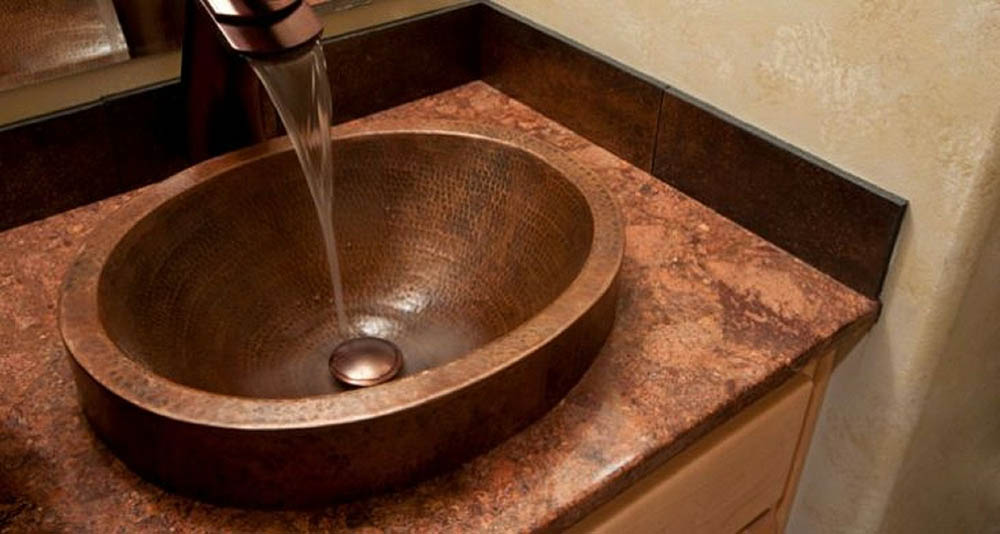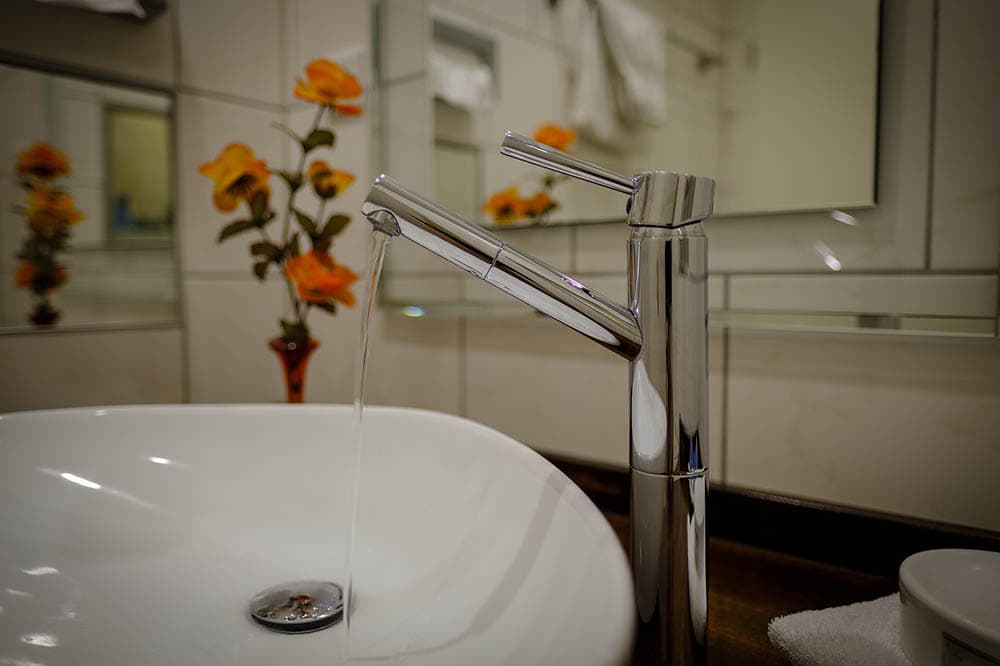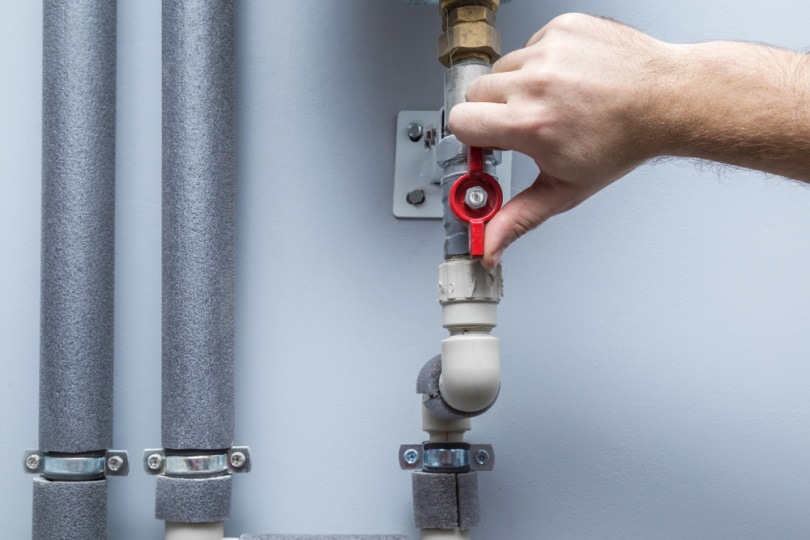What Causes Loss Of Water Pressure In a Bathroom Sink? 5 Possible Reasons
-
Pete Ortiz
- Last updated:

Low water pressure in a bathroom sink can be severely irritating. It can hamper your ability to wash your hands effectively, it affects how you brush your teeth, and it can affect how you clean your bathroom. The good news is there are a variety of simple reasons that your bathroom sink could be experiencing low water pressure, and most of them are easy to deal with by yourself.
Here are five causes of low water pressure in your bathroom sink and some suggestions on how to resolve the issue at home.
The 5 Possible Reasons for Loss of Water Pressure in a Bathroom Sink
1. Clogged Aerator
The aerator is the part of the faucet where the water comes out. It is a device that adds air to the water flow to make it more consistent hence the name aerator. On many sinks, the aerator is an attachment that is screwed onto the end of the faucet. You can simply unscrew the aerator to get it off.
A clogged aerator is the most common cause of low water pressure in a bathroom sink. Most people do not know that aerators can be detached, and they don’t realize that they need to be cleaned periodically to keep them free of clogs and debris.
Once the aerator is off, you might notice a lot of build-up and debris sitting inside. That’s what is causing your poor water flow. You can clean out the aerator by scrubbing it with a sponge and running it under running water. With the debris gone, you can screw the aerator back on and watch as your water flow returns to normal.
2. Clogged Flow Restrictor

Many faucets come with a flow restrictor installed that slows down the force of the water. People want good water pressure in their bathroom sink, but they do not want the water to come out like a fire hose. A flow restrictor is a small plate installed behind the aerator that consists of a bunch of tiny holes that force the water to come out at a slower and more consistent rate.
Like the aerator, the flow restrictor can get clogged or damaged over time. Some sinks have an aerator that is easy to detach so you can get to the flow restrictor. If that is the case, you can remove the aerator and examine the flow restrictor. If the holes in the restrictor are clogged, you might need to clean it or replace it entirely.
If you’re having a hard time seeing into your aerator or flow restrictor on a fixed faucet, you can use a hand mirror to help you get a better look.
3. Clogged Water Lines
Another thing that can clog that is not immediately apparent is the water lines themselves. Most sinks have two flexible water lines that run off of the main plumbing fixtures. These water lines feed water from the main pipes up to your sink. There’s usually one line for hot water and one line for cold water. These water lines can become clogged with silt and debris over time.
In many cases, these water lines can be easily detached from the sink and cleaned. Be sure to shut off the water to the bathroom before attempting this. Detach the water lines and run soapy water through them to see if any dark material comes out of them. You can also soak the water lines overnight if you think that will help. In some cases, the water lines might have to be replaced, which will constitute a trip to your local hardware store.
If the water lines were the problem, a thorough cleaning should result in greatly improved water pressure to your bathroom sink.
4. Partially Closed Shut Off Valves

This may sound silly, but sometimes people forget to open their shut-off valves all the way. The shut-off valves are the handles underneath your sink that you turn to cut water from flowing to the faucet. Every sink should have one or two shut-off valves located underneath. Check to make sure that the valves are turned completely towards the ON position. Having a valve partially closed can cause your water pressure to drop considerably.
Sometimes the valves will be left partially closed after a repair or maintenance work. Other times, items or even pets can bump them and cause them to partially close. There are cats that like to climb into cabinets and vanities, and they can bump the shut-off valves and cause the water flow to drop. If you store things under your bathroom sink, it is also possible for items to fall or shift and hit the valves or they can be moved around when you reach in and grab for something.
5. Problems With Your Water Heater
Issues with your home’s water heater can cause low water pressure to occur when trying to run hot water. If you like to wash your hands under warm or scalding water and find that your water pressure drops when you turn on the heat, it could be an issue with your water heater.
Water heaters can decrease water pressure for a variety of reasons. It could be that your water heater is aging and wearing down. Water heaters will decrease outflow when they run into maintenance problems. Water heaters could also be diverting water to a larger source. If someone on the other side of the house is showering or if you are running your dishwasher, it could cause low hot water pressure in your bathroom sink.
If you are experiencing water pressure issues that largely occur when you turn on the hot water tap it could be an issue with your water heater itself.
When To Call A Plumber
If you have tried some or all of these solutions and are still stumped by poor water pressure in your bathroom sink, it might be time to call a professional. There are more advanced issues that can occur such as an issue with the main water line leading into your bathroom or a failing shut-off unit. These issues will have to be diagnosed and addressed by a plumber. If you have cleaned out all of the most important parts of your faucet and checked the lines and valves, the issue is likely something that goes deeper than the typical homeowner can deal with.
Observe The Water Pressure Throughout Your Home
If you are having issues with low water pressure in more than one area of your house then the problem is likely a larger issue than just your bathroom sink. However, if the water pressure in the rest of the house is strong and consistent, the issue likely lies just with your one sink. In order to determine the area and scope of your water pressure problems, do a check of all of the major plumping points in your house to see if the pressure is consistent throughout or low throughout.
Conclusion
In a good many cases, one of these solutions will absolutely fix your bathroom sink’s low water pressure. People don’t realize that silt and sediment can slowly build up over time, and clog up some of the most vital parts of your faucet. Finding these clogs and clearing them is one of the surest ways to improve water pressure in your bathroom sink. If these suggestions don’t work, you might have to call a plumber to get to the heart of the issue.
Featured Image Credit: TerraArtesana, Pixabay
Contents


